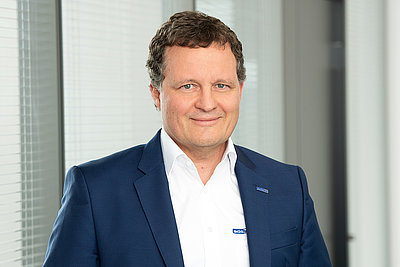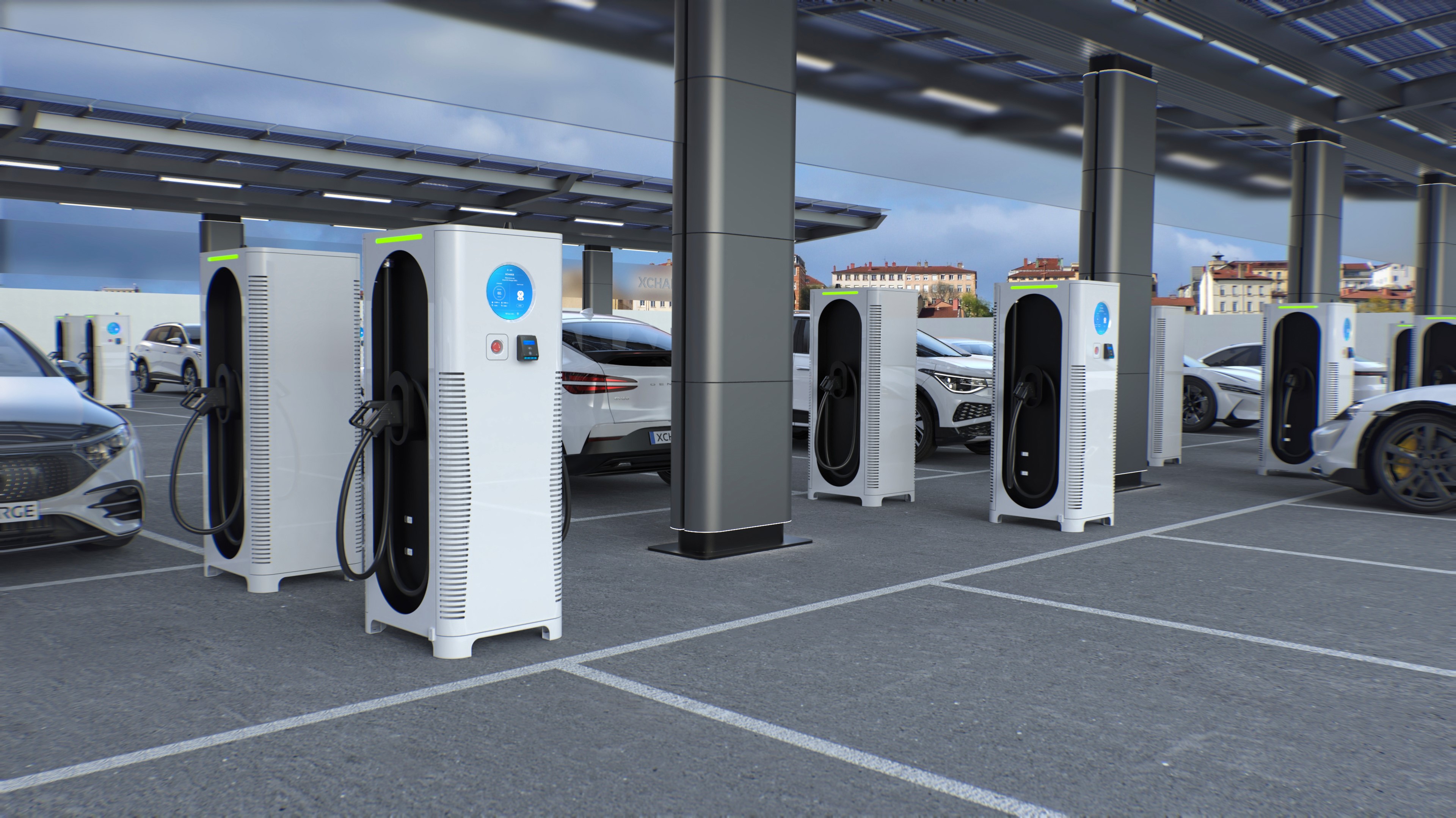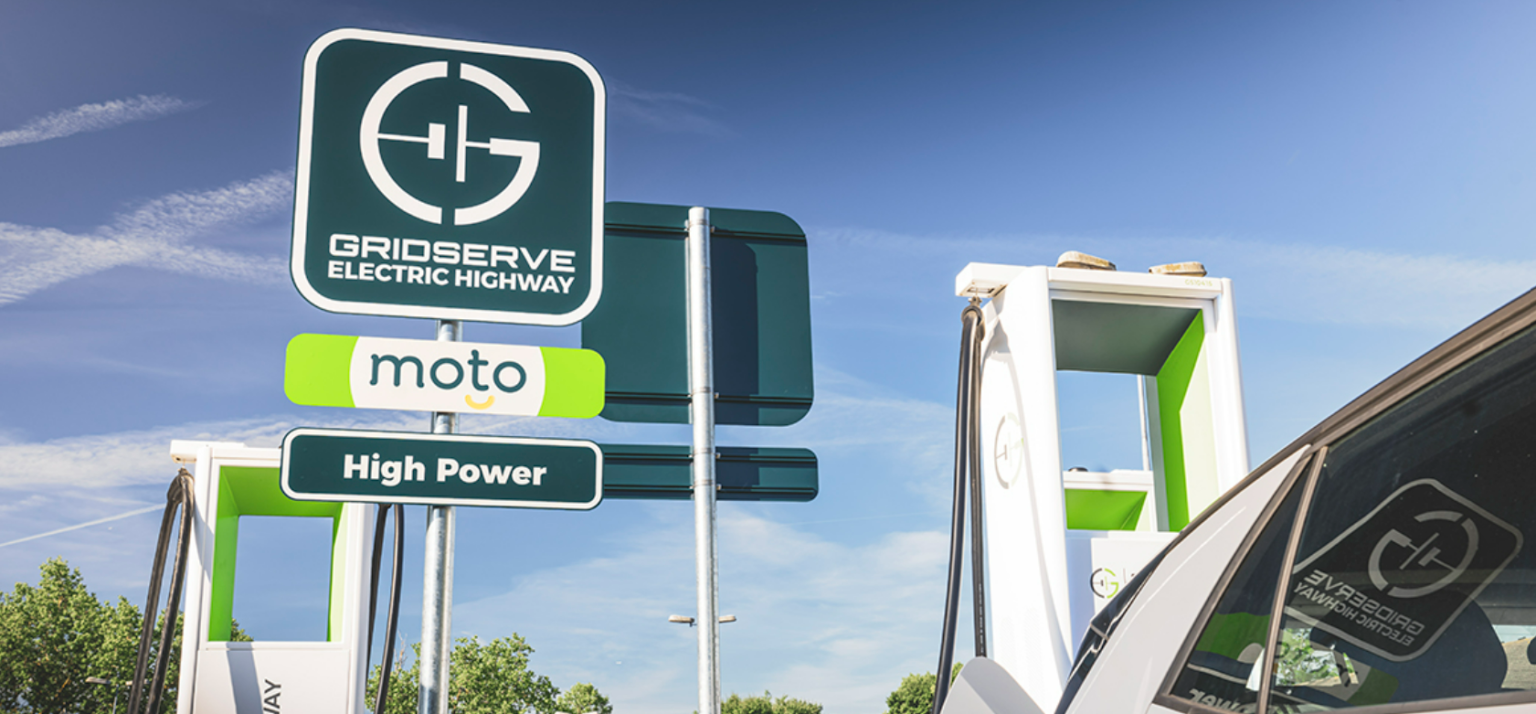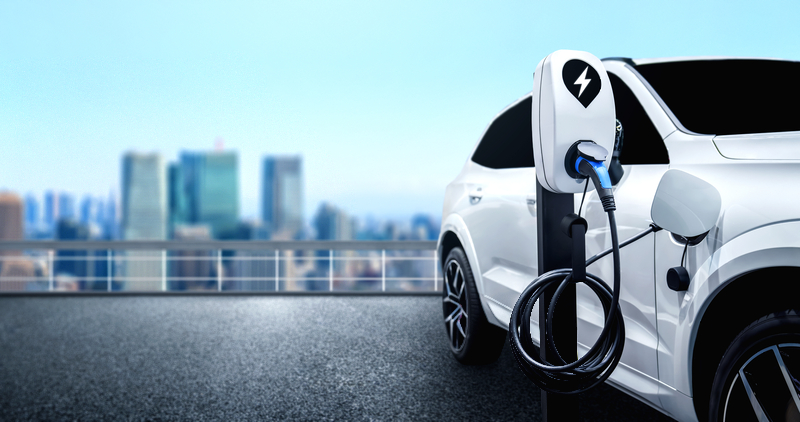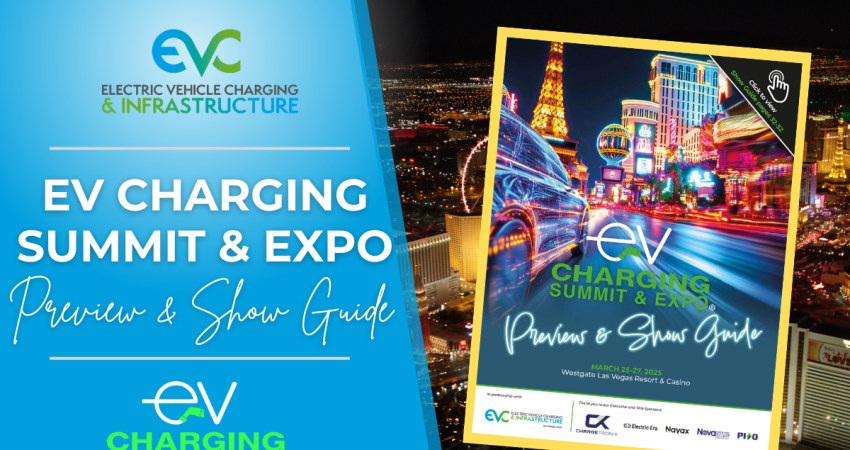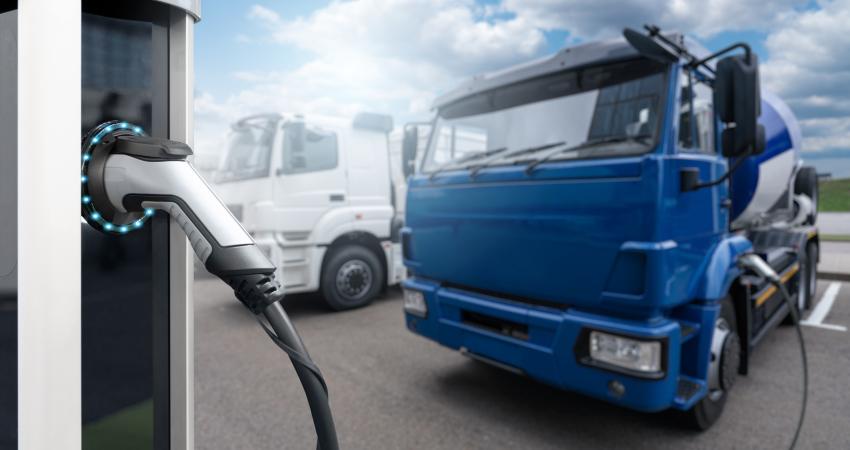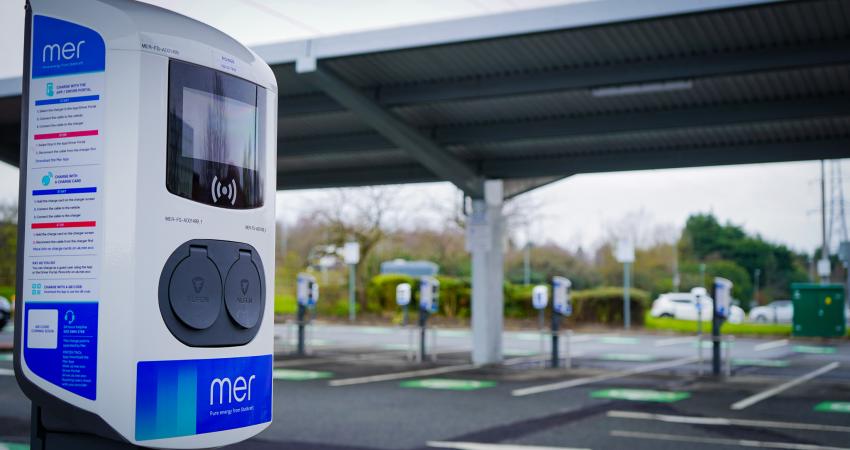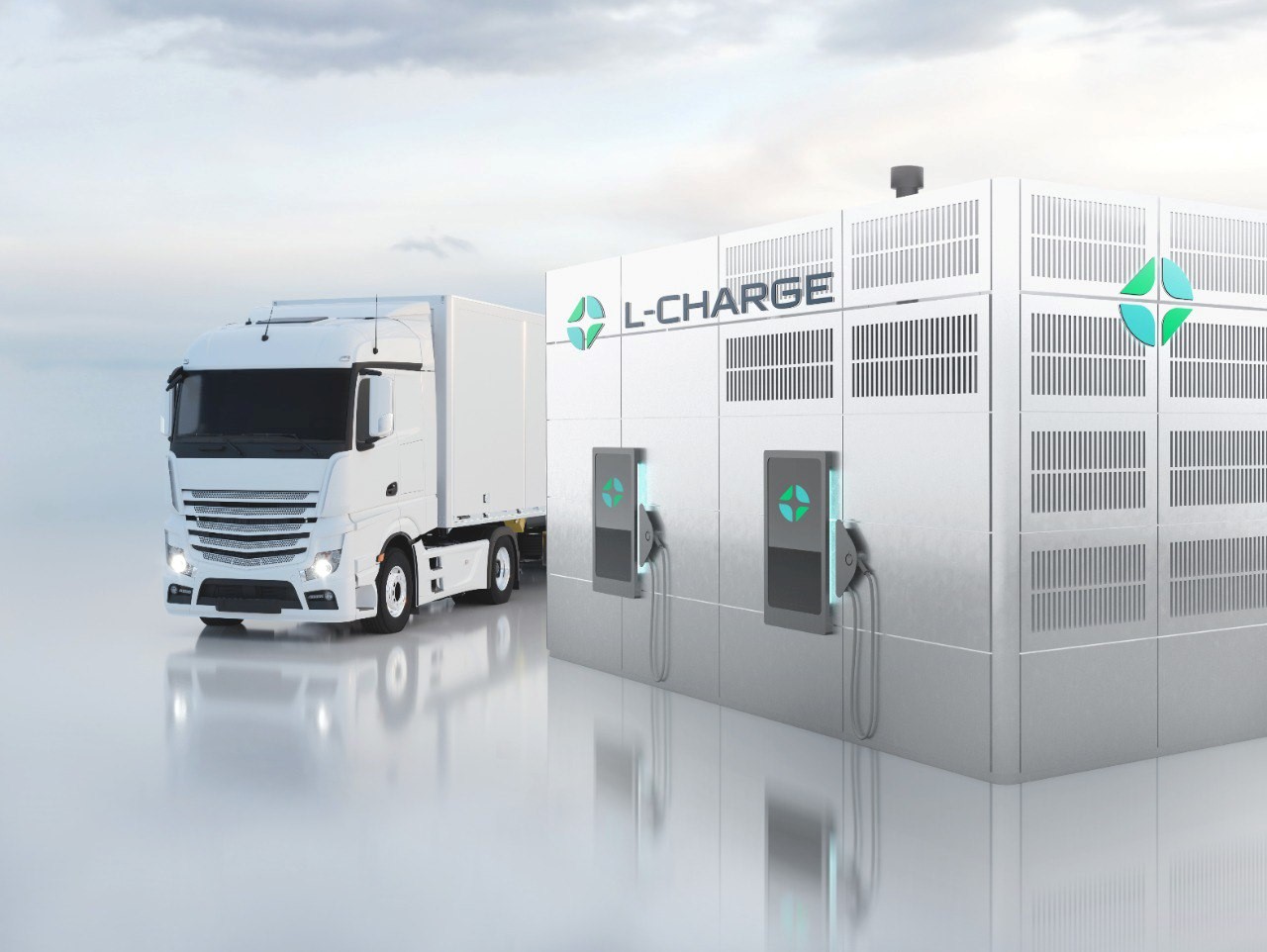
Why did L-Charge launch its Charging-as-a-Service platform?
We decided to adopt the strategy well over a year ago, purely because we're in a very unique position. In most situations you either have an EV charging infrastructure manufacturer or charge point operator, with only some charge point operators actually manufacturing their own infrastructure. Others form partnerships with established infrastructure manufacturers and tend to be relatively hardware-agnostic.
In cases where charge point operators do manufacture their own charge points, they install them for public operation, where they own and operate that infrastructure on their own accord, and don’t necessarily extend the offering onto private use clients like we do.
So, we're in a strong position where we can operate across the full value chain, as a result of being able to manufacture, install, own, operate and maintain our own off-grid chargers, which allows us to serve the end-to-end needs of private clients like large fleet operators.
The ultra-high delivery of power and rapid charging output we deliver lends itself well to charging a higher volume of passenger and light commercial electric vehicles in quick succession and HGVs and other heavy commercial vehicles with larger battery packs. So, we're very much focused on the large fleet and HGV segment at this point in time, knowing that electric truck adoption is gaining pace and we've got the solution to be able to deliver that extra high-speed power that they need to be able to charge up within a short period of time, for example 30 to 45 minutes, as opposed to three to four hours in some instances.
What benefits does the Charging-as-a-Service platform provide for customers?
The Charging-as-a-Service platform is an all-encompassing charging solution designed to meet our clients’ needs, where the asset cost is covered, the deployment side of it, including standard installation is paid for, as well as the ongoing routine maintenance and servicing of that station is covered by us, in exchange for a fixed monthly subscription premium, for a period of anywhere between 3 to 8 years, depending on the terms of the arrangement.
For that, we deliver an end-to-end service that gives our clients the security of having a solution that's constantly up and running. On top of this, they don't have to worry about maintenance, which typically they would have to see to on their own accord, and their overhead costs are fixed on a monthly basis because it's all delivered for a fixed monthly premium.
They avoid any upfront capital costs that they would have to incur if they had to own the infrastructure and get it installed themselves.
We're one of the first companies that I've seen that deliver ultra-rapid charging infrastructure on a Charging-as-a-Service platform. There has been some other charge point companies in the back end that do it on the domestic and AC charging infrastructure side, but I'd say we were very much one of the first to start offering this from a rapid and ultra-rapid charging perspective.

Is the L-Charge charging platform safeguarded against problems in relation to getting power from the grid?
L-Charge is in a very unique position because we predominantly produce off-grid EV charging infrastructure. We do have an on-grid product that was designed to meet particular use cases, but for the best part we primarily focus on the delivery of off-grid solutions.
Our off-grid solutions are offered in mobile format, such as a truck or trailer, or a containerised charging hu format. Our containerised charging hubs are designed and built to meet the required generation capacity and output charging requirements of our clients’ fleets. Currently, we use a variation of natural gas and renewable natural gas (RNG) - which is cleaner than conventional natural gas for self-contained electricity production onboard our stations.
The natural gas we use, is stored in a separate tank that is deployed in close proximity to our containerised charging hubs. Alternatively, where it’s feasible, we have the option to connect into the mains gas supply, which does then transform the charging hub to become grid connected, but still with the overall benefit of the main charging hub being movable in the event a client needs to expand or relocate premises. The tanks associated with the off-grid deployment are remotely monitored and replenished weekly or every fortnight by a tanker truck, depending on the overall rate of utilisation.
The gas delivered is used to produce electricity onboard the chargers via the use of a genset, with excess power generation then stored in a battery pack. Power is then discharged simultaneously from the genset and battery pack to deliver output charging speeds of up to 400 kilowatt per charging connector.
As a forward-thinking business, we're using natural gas today, but we're very much on the trajectory of moving towards green hydrogen in the future. Although we’ve seen rapid developments in this space, there are still several challenges associated with the use of green hydrogen right now, mainly limited market availability and production volumes, that has an effect on supply pricing which in most cases is still relatively quite high.
As hydrogen plays a bigger role in the future and becomes more readily available, we will be manufacturing more hydrogen fuelled units, with the aim of leveraging green hydrogen to reduce our emissions associated with power production even further.
What do you think is the time frame for when green hydrogen will become viable to use?
We're hoping within the next few years we'll be able to start manufacturing our hydrogen charging units at scale. We are openly exploring options at the moment to enable the deployment of our first hydrogen units, so we’re all set to start producing units that generate power from hydrogen, but equally important is finding suitable partners and securing an adequate supply of green hydrogen at a really good rate. I think cost parity will probably come in the next two to three years.
The only restriction with green hydrogen is the ability to deploy in highly urbanised areas, where you can't hold large volumes of gas, but we tend to look at service yards within retail settings and other secured open spaces where we can run gas through to the charger where it's required, so there are very limited areas where we can't deploy at this point in time.
Is L-Charge targeting its charging services at any specific sector such as heavy vehicles?
No, it’s a broad mix. We are open to deploying our charging stations in public settings with high traffic volumes such as motorway service stations where they want to make provision for high volume EV charging, whether that's in the form of light passenger vehicle hubs or commercial truck charging hubs, we can deploy there. We tend to look at taking on a joint venture approach with opportunities such as those with motorway fuel court operators.
For the specific Charging-as-a-Service model, we tend to position this at large fleet clients, such as delivery and logistics companies that have a fleet of light commercial electric vans or HGVs. In these scenarios, we would deploy a fully serviced charging hub at their premises, and in return they would pay us a fixed monthly cost for this. Incorporated within that fixed monthly cost, would be the routine servicing and monitoring of our charger, the generator loads, the fuel replenishment, and a set allocation of kilowatt hours. For instance, 25,000 kilowatt hours made available for an entire fleet to use for the month, all captured into one fixed monthly premium for the client.
Which countries are the main markets for L-Charge?
We focus on the USA and Europe at this point in time, but we're starting to see an increase in demand coming from the Middle East and other markets like Australia and the Far East as well.
I predominantly focus on Europe, because I'm UK-based and that's where our European headquarters are, but we've got offices located on the West Coast of America as well, so we are extremely well placed to deploy there. We've been active in the United States for just over a year and have representation across the East, West and central states. We are also actively conducting various mobile charging assignments in California, Texas and New York this quarter.
Is L-Charge’s business focus now centred around the Charging-as-a-Service offering?
It’s an interesting question! The short answer is no, it’s an extension offering. In summary, our main focus, up until the launch of the Charging-as-as-Service platform, was mainly on the deployment of charging infrastructure for public use at motorway service station sites, shopping centres, urban car parks, etc with relatively limited focus on the deployment of infrastructure in private client settings.
But now, with the launch of the Charging-as-a-Service offering, this has enhanced our focus towards meeting the needs within both segments, and the expectation is that the Charging-as-a-Service platform is likely to make up a large portion of our business going forward. Perhaps as much as 70%, with the balance being partly made of public charging infrastructure we deploy solely on our own accord, and the balance through joint venture operations.
Are there any things your EV charging customers are specifically asking for at the moment?
There's been a lot of infrastructure provision made for lighter vehicles and vans, but now with a large portion of trucks going electric, I think there's a changing market where there is some fit for purpose infrastructure in place relative to private use already, however public charging infrastructure accessibility for trucks is still very limited.
There are a lot of businesses now putting emphasis on growing this segment, so what we are seeing is a need for higher output charging speeds. Where before the average output was around 150 kW to 175 kW per connecter, with limited need for 300 kW or 350 kW because only a select number of premium vehicles could actually accept that sort of high-speed charge.
But now with truck battery capacities being much bigger, typically anywhere between 250 and 600-kilowatt hour depending on the truck’s specification, what is needed is ultra-rapid charging infrastructure that delivers anywhere from 250 to 400 kilowatt as an output to enable these trucks to charge up their batteries from 10-20% to 80% full within 45 minutes to an hour as opposed to having to stay connected for three or four hours. And the other side of that is the regulated breaks that truck drivers need to have. Within that break duration, they want to make sure that they can charge the truck as quickly as possible to continue as far as possible on the next leg of the trip without having to stop again.


